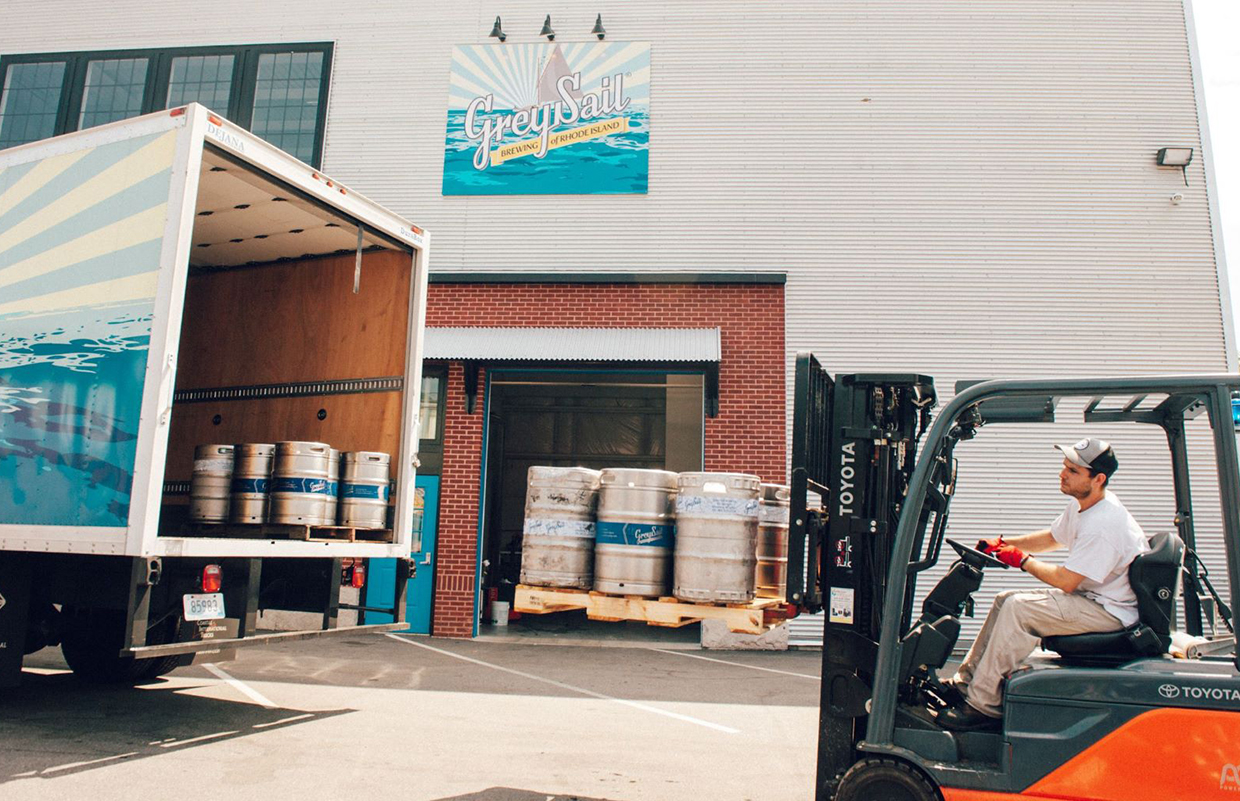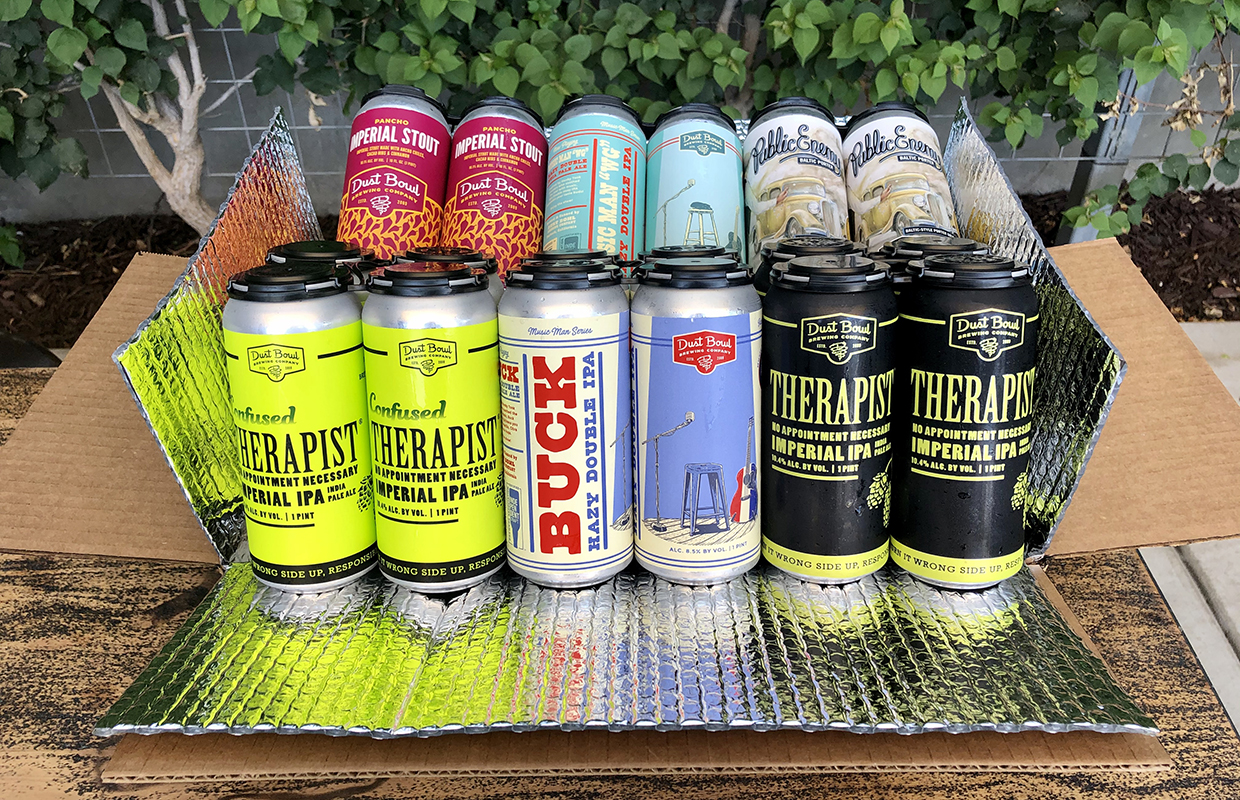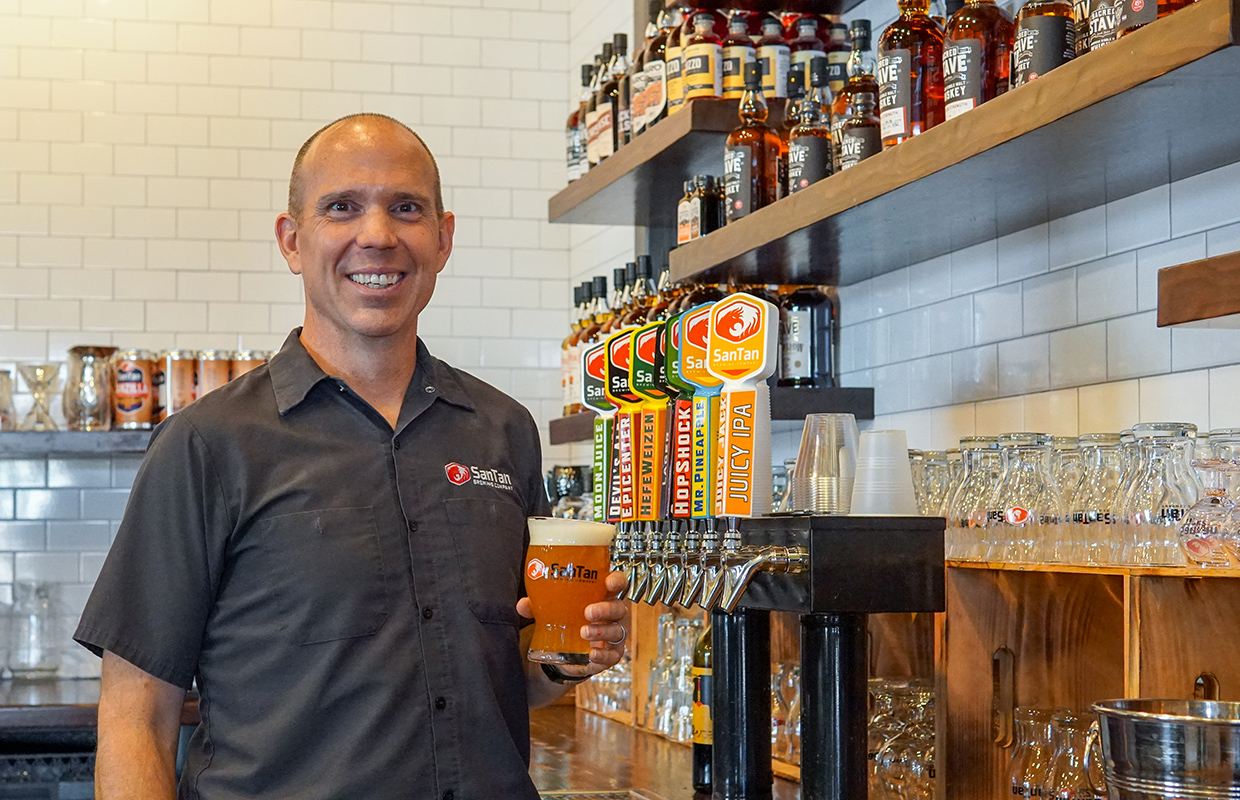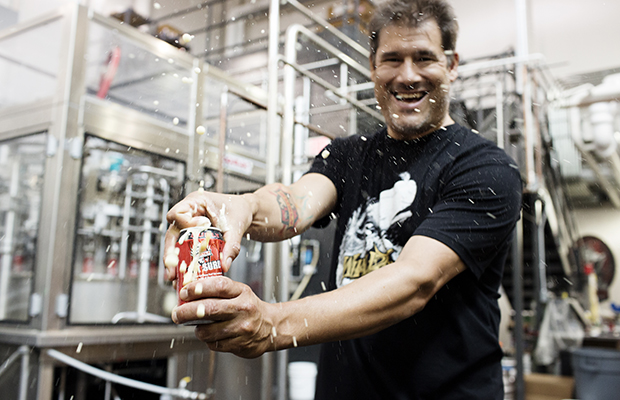
Challenges always abound and a variety of solutions can be plenty, but the craft beer industry continues to see changes and adaptations continue as owners and brewers head into a new year. Many plans for the future have been laid out and the start of implication to affect the growth and trajectory of impact to a local or regional community has already begun for many. These breweries shared their plans and with these insights, it could help alter your brewery’s ideas for the future as well.
Is “Beyond Beer” Right for You?
Atlas Brew Works Director of Brewing Operations Daniel Vilarrubi acknowledges that the “Beyond Beer” movement has affected a drop in beer sales nationally — although the Washington DC-based brewery has not been affected by that out in the market, he said. But, they have seen an increase in requests for things like cider, non-alcoholic beer, or canned cocktails.
“Fortunately, our licensing in DC allows us to serve spirits, wine, and cider so we’ve brought a small selection into our taprooms for the folks that don’t drink beer,” he said.
However, some breweries have made plans to expand into these diverse drink ideas.
Grey Sail Brewing launched a distillery in 2020 and founder Alan Brinton said they continue to grow the spirit portfolio. The Rhode Island brewery produces several different canned cocktails and recently invested in new equipment for cocktail manufacturing.
They also are working on a non-alcoholic beer project to launch in the second quarter of 2024.
“We’ve been following the downward trends of alcoholic beverage consumption and the growing popularity of Sober October and Dry January and feel like now is the time to enter the NA category,” Brinton added.
Urban Artifact is taking steps to create both NA and newer brands for the company that positioned itself early on as a fruit-tart maker. The first step was investing in a tunnel pasteurizer, a DSP, and a wine license as a means to open up the brand across beverage categories, said COO Bret Kollmann Baker.
“One thing that we’ve learned about ourselves over the past year is the importance of investing in your niche,” he said. “Our niche at Urban Artifact is fruit. And fruit transcends beer, fruit works so well in a wide variety of beverage categories that by doubling down on our brand specialty/niche of fruit, we’ve opened up new avenues for brand development outside of just fruit beer.
“Much in the same way that hop-forward brands invest in hop waters, or Voodoo Ranger continues to invest in convenience and value, we’ve decided our best investment is in what we do best, fruit.
Added CFO, Scotty Hunter, these categories have always been of interest, they just didn’t have the proper equipment to do it right.
“We’ve always been a proponent of shelf stability,” Hunter said. “If you want to make something sweet, that’s fine. It’s not mostly our jam. But just make sure that it’s stable, right? Don’t put all the onus on just the customer. That’s not common in this industry. It’s not normal.”
Bevana’s business was built from the start to accommodate non-beer beverages, and Senior Director of Business Development, Aaron Gore explained it’s a natural progression for many companies to create new niches that may not have been there at the start.
“We’ve been in the kombucha space almost since the beginning,” he explained. “It’s never been about ‘beer.’ It’s always been about ‘fantastic drinks,’ with beer just being the focus.
“Now is the time to broaden that focus, but the same value, culture and community are still important, no matter what you are making.”
Brewpub-ish? Adding Food to Taproom
The mentality of “I’m opening a brewery to make beer, not to open a restaurant,” has been the sounding bell for many brewery owners over the past decade or two, shunning the ’90s brewpub model. Seeing locations sprout up with an industrial look drew in craft beer drinkers at the start but as those possible younger customers grew up and with the pandemic taking a bite out of casual “beer hopping” from brewery to brewery, many breweries see the need to go beyond the potential headache of scheduling food trucks day in and day out and instead finding a more permanent solution.
Companies like Urban Artifact opted for a split model. The Cincinnati brewery built out a kitchen, and integrated food sales into its POS and taproom, but found a third-party operator to run and own the kitchen at a below-market rental rate.
“We had a pizza kitchen on site for a number of years,” Hunter said. “It was pre-pandemic and obviously everything really kind of shifted and changed.”
He said the third party will focus on a barbeque menu after doing their due diligence in finding the right partner.
“They’re doing a mobile rig right now, while we were adding in a hood for the kitchen and doing some other improvements, like a walk-up window, and some other things that need to happen with the building property to allow them to have a more robust commercial kitchen.”
This vendor agreement removes the headache and risk of running their kitchen, Baker said, while still providing food for customers.
“This has allowed us to be more deliberate and slow with our search for a food partner, finding someone who is truly a great fit for our brand and vice versa,” he said.
A lot of the thought process for Urban Artifact goes to consumer behavior overall.
“It’s not just breweries,” Hunter said. “A lot of times now, people are going out but they’re not going out to bar hop to five or six different places. They’re going out to have a meal, and then maybe a drink in another place, and then they’re heading home and not staying out as much.
“We’ve seen that and so it was of high importance to make sure that we wanted to do it the right way and found a really good operation that can assist us in growing that on-site experience.”
Grey Sail built an outdoor kitchen at its taproom operated by another restaurant.
“We prefer this because they are experts at food prep and it allows us to focus on the beer and cocktails,” he said.
Atlas’ production brewery still works with outside vendors while its brewpub location has its own kitchen.
“We’ve found that having a kitchen goes a long way with reliability,” Vilarrubi said, “but lately the food vendors we work with have been great.
“If you have good vendors, they’re both viable options, but having food is a must if you want customers to hang out for a while.”
Getting Started? Words of Wisdom
Know what you want to accomplish before you start, Gore said.
“Most of the ‘end goals’ in this industry are mutually exclusive,” he pointed out. “Do you want to distribute? Do you want to be a production brewery with contract capacity? A local taproom? Pick one, just one, and make your decisions with that end in mind.”
Set up a good taproom presence, Vilarrubi added.
“Distribution is a tough game right now, but a taproom is a solid way to build a customer base,” he said. “The margins in a taproom can also float a brewery while you grow your market presence.”
And don’t quit your day job, Brinton said.
“I speak from experience. Our brewery is about to celebrate its 12th anniversary and I stayed in my day job for seven years,” he said. “Not having to take a salary for seven years allowed me to invest back in the business and set us up for long-term success.
“The days of year-after-year double-digit growth are behind us so it’s more important than ever to have a solid financial foundation.”
Gone are the days of the generalist brewery, Baker said. Instead, find your niche, and own it.
“‘Get Rich in Your Niche.’ It is our simplified business strategy since day one and it rings true more than ever in this increasingly competitive market,” he said. If you plan to set yourself apart from a field of 10,000 breweries and vie for an ever-dwindling share of luxury consumer expenditure, you better damn well be the best at something.
“Your niche doesn’t need to be a product category either, it can be brand story, marketing, sales strategy, consumer experience and such. But you need to set yourself apart and become world-class at something.”
Hunter stressed you need to do a lot more market research and really understand what sales projections can be.
“You really need to define what your brand is, and what value you are providing,” he said. “You need to have a unique value proposition. And I don’t think we’ve necessarily seen that type of specificity on a wider scale in craft beer.”
Hunter used the example of 90s sit-down restaurants as an example of what the craft beer landscape could be mimicking. Using places like TGI Fridays and Applebees, those places grew quickly as a franchise.
“They were gonna do a little bit of everything, an all-American type restaurant,” he said. “But tastes and preferences changed and things have become more targeted to a customer base, with a focus on excelling at certain things.
“Places like Canes make chicken tenders. That’s it. You want anything else? Go somewhere else. That mentality of ‘if you want this, you come here,’ I think it really helps cut through a lot of the noise in the market. And hopefully, we start to see more of that on the beer side.”
Photos courtesy Atlas Brew Works & Grey Sail Brewing






Be the first to comment